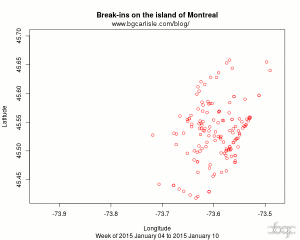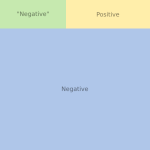Warning: spoilers for Star Trek Discovery season 1.
A few days ago, I wrote a short post about “steps” that media franchises take toward queer representation in media. I got a few requests for clarification, so I have expanded it into a table with examples and explanations.
The impulse behind the post was that resistance to representation of queers in media franchises is very predictable, falling into well-known and discrete categories, and that those categories can be ordered from worst to best. I absolutely do not take credit for being the first observer of these dynamics, as many people much smarter than me have commented on them all before. But this is how I see them, on a sort of a continuum.
I originally phrased it in terms of “steps,” although now I don’t think that’s the best way to think about it, so I call them “levels” here. There’s certainly a gradation from 1-7, but of course, not every media franchise goes one by one. Each successive step is better in some sense than the one previous (although you could probably haggle over the ordering in some cases). Levels 1-3 are refusals to represent queers and levels 5-7 are (decreasingly begrudging) attempts at queer representation. Level 4 is, or is not queer representation, depending on your reading of it.
1. Refusal without any attempt at justification
“No queers because writers hate them”
Naked hate for queers, while surprisingly common, is the least interesting case, and nobody needs help identifying it. But most people are more sophisticated because they know they’ll (rightly) get in trouble if they’re openly hateful toward queers, so usually they dress up their hate by progressing to one of the subsequent steps.
I’ve included this one because you do still see it from time to time, and it’s interesting to note how often as a sort of proxy measure for how friendly our culture is to queers.
2. Refusal with some ostensibly principled reason given
“No queers, but it’s for your own good or something”
A justification that is often given for refusal to include queer characters in a story, TV show, movie or whatever is that it would be “pandering,” and that this would be bad somehow. Straight people love to project onto queers a very strong desire that we not be included in something if it is just for the sake of inclusion, and that doing so would be much worse than the default, namely, pretending that queers don’t exist.
This is of course nonsense. The only people who don’t like queers being included just for the sake of including queers are straight people, and this is a feeble excuse for bigotry. But there’s nothing conservative people like better than telling someone No, and having it be For Their Own Good.
3. Refusal, but with a vague promise of future representation
“No queers, but just because we haven’t had a story that demands a queer”
Star Wars is at this point right now. They know there have been calls for queer characters, and they know they can’t just say “No we hate queers,” so they’re kicking the can down the road by saying “not now, but we’re not opposed to the idea,” and trusting we’ll take them at their word when they claim that it’s just “artistic reasons” that have kept them from doing so already.
It’s disingenuous and a double-standard of course. When these writers come up with characters to put into their stories, nobody demands that there be a compelling reason demanded by the plot for why some character is straight. And if they think they can get away with it, they will continue forever to promise to include queers someday, but no sooner than the story absolutely demands it.
4. Strongly implied but ultimately deniable queer representation
“Okay maybe this secondary character is queer? We didn’t say they’re not!”
Harry Potter is an excellent example of this level. JK Rowling famously made Dumbledore gay retroactively after all the book sales were in the bag, and justified it with the condescending Twitter one-liner that gay people just look like … people! So why write them any differently or provide any explicit representation?
The problem with the JK Rowling-type response is the extremely “everything is already perfect so stop complaining” vibe here. The line that we queers are supposed to believe is that the writer is just so progressive that queer representation is unnecessary.
The Star Trek reboot films are also at this level. Everyone got excited about Sulu being gay in Star Trek Beyond (2016), but what we got was 2.5 seconds of Sulu side-hugging some guy, who we’re supposed to take as his civilian husband or partner or something. No kiss. No dialogue. It’s so casual that a straight viewer could miss it entirely or see it and argue that Sulu is meeting his brother or something. And truthfully, there isn’t enough on-screen to settle the matter conclusively.

It is both erasure of queers and it is a not-so-subtle assertion of control that can be read as a disapproval of any queer who isn’t indistinguishable from straights. Also, because this generally flies under their radar, this is a cowardly concession to the sensibilities of outright bigots.
Many Disney villains are also in this category. Ursula from The Little Mermaid (1989) was even based on a drag queen. Straight people love to include queer-coded villains, because they love queer aesthetics, but they refuse to actually provide representation, because they hate queers.
5. Tragic queer representation
“Okay there’s a queer but oops we killed it lol oops”
“Bury your gays” is a well-known and troubling mode of queer representation that has a long history, and it can be summed up as the trope that queers are not allowed a happy ending.
Sometimes, this is done to send a very specific “you get what you deserve, you dirty queers” message. Read Goldfinger if you want a really clear example of that. (Click the Project Gutenberg link and control-F for “Poor little bitch” to read about what happened to Tilly Masterton because she was a capital-L lesbian.)
Goldfinger is an extreme case and most of the time, it’s not an attempt to send an “if you’re gay you deserve a violent death” message. Usually, this happens just because the main character Has To Be Straight, and so if there’s going to be a character who dies, it’s going to be the queer one, and so we end up with a preponderance of media representation in which queers are killed just to raise the stakes for the main characters, just because we’re less important.
We saw this with Lt Stamets in the most recent episode of Star Trek Discovery (S01E09). I thought Discovery was at level 6, but actually it’s looking like it’s here. Maybe they’ll save him? Reserving judgement on this one.
6. Queer representation designed for straight comfort
“Okay there’s a queer but you can’t really tell they’re queer—Super respectable! Very comfortable for straights!”
Often queer representation that is designed for the comfort of straight people is done with the justification that it’s an attempt to “move past bad gay stereotypes.” Again, this is a more subtle example of straight people denying us actual representation and doing it For Our Own Good.
The idea is that there are, according to the straights, way too many flamboyant or promiscuous gay characters perpetuating bad stereotypes and what the world really needs is to see queer people being “good” and that will make all those bigots understand that you can be a good person even if you’re gay. What a progressive message, and who could be upset about that? Right?
The problem is that this has built into it the not-so-subtle assertion of a) control of straight people over queer lives and lifestyles, and b) implied inferiority of queers to straights.
When straights insist that queer representation include only the “good kind” of queer, there’s an implication that there’s a bad kind, and that our acceptance and inclusion hinges on which kind we are. It is tacitly agreeing that queers should be ashamed of who they are and doing their best to hide it.
This often goes hand-in-hand with a denial of the very existence of queer culture. For anything that isn’t literally gay sex, a Respectable-Gays-Only advocate can say “well, that’s not gay per se, so it’s non-homophobic for me to continue to hate it.”
This level also includes “blink and you miss it” queer representation. E.g. the Star Wars 9 lesbians, and Captain America’s Endgame therapy buddy.
7. Actual queer representation
This does actually happen sometimes. Here’s a couple examples:
Pretty much everyone in Sense8 counts. Even the straight dude is not all that straight.
Orphan Black also started at this level. Felix is an excellent example of queer representation. Felix is a nuanced and well-developed character that is undeniably gay, and also unambiguously morally good despite him having a number of the traits that Respectable-Gays-Only advocates would probably categorise as being gay stereotypes. Not only that, but there’s more than one queer character, and this means that they have a tragic gay character proportion of less than 100%, which is more than I can say for Star Trek Discovery.




